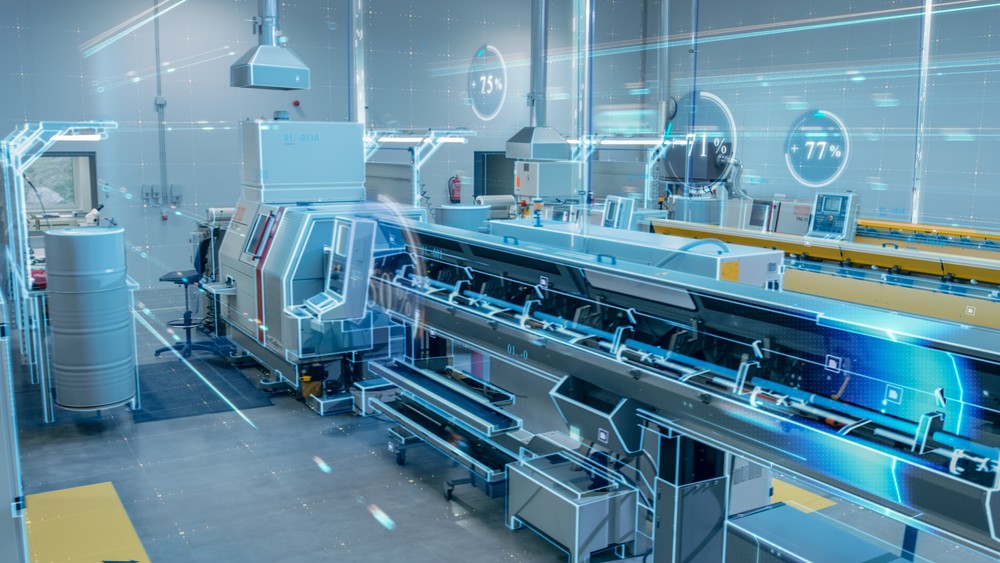Virtual Factories: What They Are and How They’re Changing Manufacturing

Manufacturing 4.0 is here, ushered in by a wave of incredible technologies spanning everything from augmented reality (AR) and virtual reality (VR) to generative artificial intelligence (AI) and automation. At the forefront of this industrial revolution lies the concept of a virtual factory — an innovative and dynamic approach to production that reimagines traditional manufacturing paradigms.
But what is a virtual factory? As manufacturers take their first strides into a digital era, it’s critical to define the destination. As you implement digital innovations across production, at what point do you have a virtual factory?
Understanding virtual factories
In simplest terms, a virtual factory is a digital replica of a physical manufacturing plant, including all its processes, machines, and systems. Put simply, it’s a full-scale digital twin. But unlike a pure digital twin, digital factories still have roots in reality. They’re supported by physical manifestations — machines, equipment, raw materials, etc.
In the truest sense of the word, a virtual factory is the digital side of a traditional factory. It’s designed to aid and support physical production using digital controls and insights. Key components include:
- Industrial internet of things (IIoT): The IIoT forms the backbone of virtual factories by connecting physical devices and machines to gather real-time data. Sensors embedded in equipment collect information on performance, maintenance needs, and environmental conditions to facilitate predictive maintenance and process optimization.
- AI and machine learning (ML): AI and ML algorithms analyze the vast amounts of data generated by IIoT devices. These technologies help identify patterns, predict outcomes, and optimize manufacturing processes for higher efficiency and quality.
- VR/AR: VR and AR technologies find applications in training, maintenance, and remote assistance. Virtual simulations allow workers to learn and practice complex tasks in a risk-free environment, while AR aids technicians by providing digital overlays on physical equipment to guide them through repairs and maintenance tasks.
- Cloud computing: The cloud plays a vital role in virtual factories by offering scalable, secure storage for the massive amounts of data collected. It enables remote access to data and applications, facilitating collaboration and monitoring of multiple manufacturing facilities from a central location.

Advantages of virtual factories
As most manufacturers have realized, the cost to ramp up digital operations is significant. But done right, there’s incredible potential for cost savings and enhanced production. The question becomes one of how to realize this ROI. How can manufacturers benefit from a digital replica of their entire operations?
- Closing inefficient loops: By leveraging real-time data analytics and advanced technologies, virtual factories can identify inefficiencies and streamline production processes. This leads to reduced operational costs and better resource allocation.
- Maximizing efficiency and minimizing downtime: With continuous monitoring and data-driven insights from IIoT sensors, manufacturers can detect potential issues before they escalate, ensuring higher product quality and preventing costly breakdowns.
- Encouraging sustainability: Sustainability is non-negotiable in the modern manufacturing landscape. By optimizing energy consumption, waste management, and transportation, virtual factories promote eco-friendly practices in manufacturing.
Top considerations facing virtual factories
With the increase in virtual factories comes many considerations worth exploring. How much will the initial investment cost? What type of technology is necessary? How can you ensure data remains secure and private? These are all valid questions executive leaders must answer before plunging into the construction of a virtual factory.
It’s wise to approach a virtual factory incrementally. While it may take some time, energy, and effort, investing in virtual technology stands to revolutionize your production. Even minor digitization can lead to considerable benefits — and it’s enough to earn you the “virtual factory” moniker.